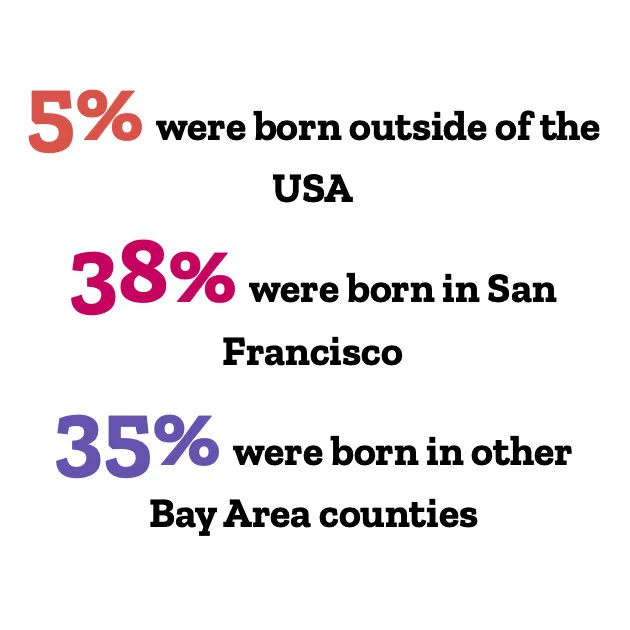THE CHALLENGE
Every day, young people experience exploitation right here in San Francisco.
307 cases of child and youth commercial sexual exploitation were reported across 13 different agencies (2017 data).
A 2019 report put out by the San Francisco Mayor’s Task Force on Anti-Human Trafficking aggregated data from service providers across the city on clients they served in 2017. This data is limited: there is likely duplication, as some clients may have been reported by more than one organization. At the same time, many people who experience exploitation do not self-identify or seek services at all. Nevertheless, this data helps us understand key trends, based on what providers saw regarding children and youth (through the age of 24) who had experienced commercial sexual exploitation.
Data from other sources
San Francisco’s 2019 homelessness point-in-time count found that 252 youth and children they encountered (22% of the 1,145 surveyed) had traded sex for a place to sleep.
In a 2019 survey of 114 youth that our HYPE Center Youth Founders encountered on the streets of San Francisco and in other San Francisco drop-ins, they found that 20% self-identified as having experienced exploitation and 55% had experienced violence.
As of January 2021, San Francisco Family and Children Services had identified 65 children within the foster care system as having experienced commercial sexual exploitation. 58% of those were Black.
Who is impacted?
While any person can experience commercial sexual exploitation, we do see certain trends in the Bay Area and across the United States:
Youth of color and LGBTQ+ youth are disproportionately impacted by commercial sexual exploitation.
The majority of youth in California experiencing commercial sexual exploitation have had experience with the foster care system.
Some other known vulnerabilities include homelessness, compromised immigration status, history of sexual abuse, and being a member of a marginalized group.
If you’re interested in reading words from those who’ve been impacted, check out the blog we compiled through our I Am Jasmine Strong campaign.
The Bay Area has amazing services… So, why do we still have a problem?
We see exploitation as a result of a dynamic and interconnected web of forces and systemic failures – things like a broken foster care system, a network of services that remains hard for youth to navigate, and a housing crisis within San Francisco that often leaves youth vulnerable to exploiters.
Here are some of the forces that can lead to and compound the harms of exploitation:
We believe that addressing exploitation requires tackling multiple forces that create vulnerability in a dynamic ecosystem, beginning with those that have greatest leverage. You can read more about how we do this here.



